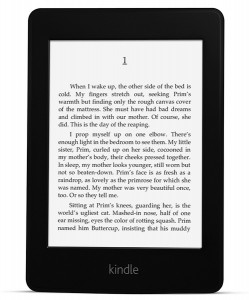On Friday morning I received a sad email: Fictionwise is shutting down.
Back in the early 2000s (does that decade have a pronounceable name yet?) I took my trusty Rocket eBook Reader everywhere. There weren’t a lot of options to legitimately buy ebooks back then, but Fictionwise was among the first. They specialized in sci-fi, and I bought tons of short stories from them by moderately well known authors. Usually they cost less than $1, and were often DRM-free. Yes, Fictionwise was ahead of it’s time in some interesting ways. I looked forward to buying a digital version of the sci-fi magazine Analog every month, and grabbed an occasional novel too.
As I shifted more of my reading to ebooks, Fictionwise didn’t really meet my needs anymore. Their selection was never the greatest, though I knew that if they had what I wanted it was almost always at the cheapest price around. And in a move unheard of at other ebook retailers, they offered regular coupons. I bought something there as recently as October 2011, by which point the site was a shell of it’s former self.
Barnes & Noble bought Fictionwise in early 2009, and left the site largely untouched ever since. I’m not sure what they did with the store, but I’d guess it was a staff acquisition. Whatever happened, Fictionwise’s customer support dropped off a cliff. They took more than two weeks to get back to me when that 2011 ebook purchase had major issues in the text. Time pretty much stopped for their site – it still has the exact same design I remember from 2003.
While my good memories outweigh the bad, it’s time for Fictionwise to go. B&N is shutting them down, and allowing users to transfer most of their Fictionwise purchases to a Nook library. Only one of my dozens of titles have made the transition so far, but I’m assured more will follow. And I’ve got backups of them all, so I’m not worried. Still, there’s a lengthy list of Fictionwise titles which won’t be transferred to a Nook library. If you owned one of those, they’ll just be gone.
This is the first semi-major ebook store shutdown that I’ve personally experienced as a customer. Despite the backup and transfer options available, I still find it disturbing that my library can up and disappear.
I do salute B&N for handling the shutdown relatively well, and wish them the best.

![FictionwiseLogo1[1]](http://www.hiddenpeanuts.com/wp-content/uploads/2012/11/FictionwiseLogo11.jpg)

